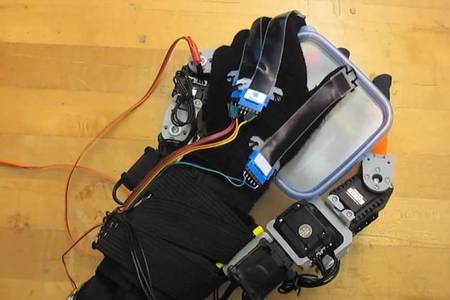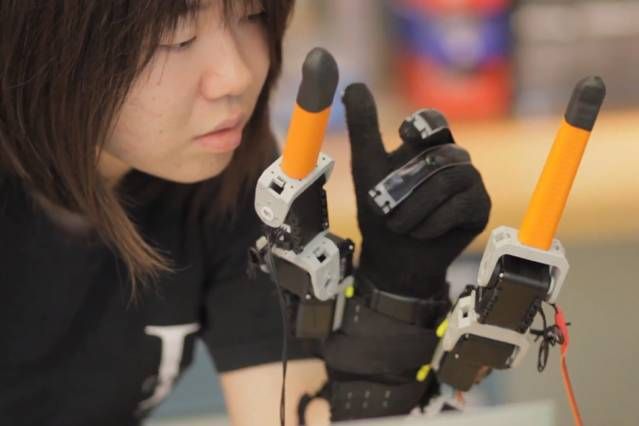A team of MIT researchers has designed a hand glove with two robotic fingers. The glove has embedded sensors and associated algorithms to detect finger movements and use them to control robotic finger movements. The idea is to accomplish the tasks normally requiring two hands with one.
A team of MIT researchers has developed a glove with two robotic fingers which act in coordination with other fingers on the hand. The system allows to perform tasks with one hand that would normally require use of both hands, for example holding a cup of coffee while stirring spoon in it.
This invention could be very useful for the elderly or disabled, enabling them to more easily accomplish everyday tasks. “This is a completely intuitive and natural way to maneuver robotic fingers. You do not need to control the robot, but only move your fingers naturally. Robotic fingers react and assist your fingers,” says Professor Harry Asada in the demo video he posted on YouTube .
He also has also presented his concept at the conference Robotics: Science and Systems , held at the University of California, Berkeley.
[youtube]https://www.youtube.com/watch?v=FTJW5YSRZhw[/youtube]

On this image, we see how the system allows us to hold a box with two robotic fingers while opening it with the same hand. Once miniaturized, this equipment can be used in particular for the elderly or disabled, or why not in some industries.
While developing this system, Professor Asada and his team first studied the synergy between movement of hand and finger muscles to develop the models of movements and associated algorithms. They made a glove equipped with sensors that detect the positions of fingers. The process to synchronize the human fingers and robotic fingers involves holding various objects and then positioning the artificial fingers. The respective positions of the seven fingers were recorded and analyzed to identify combinations that can serve as a reference model for the algorithm. Each robotic finger has three degrees of freedom.
At the moment, the system is limited to holding and releasing an object. The next step is to control the pressure exerted and to learn the different ways of holding an object. Professor Asada expects to reduce the size of the equipment and make it more flexible.
